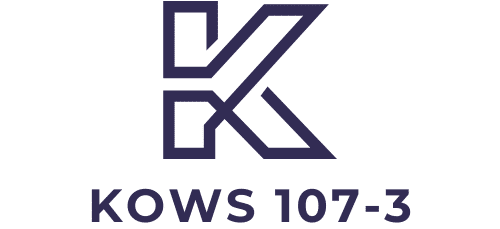Achieving product-market fit is a critical step in a business’s path to success. It signifies the moment when a product connects with a target market, fulfilling a need or solving a problem in a way that’s appreciated by the customer base. Product-market fit is a crucial marker of growth and sustainability. However, reaching this milestone isn’t always easy and straightforward. This article will delve into practical strategies that can help your business find that elusive product-market fit.
Understanding Your Target Market
Before you can achieve product-market fit, you need to understand who your customers are, what they want, and how your product can meet their needs. This knowledge is the foundation upon which product-market fit is built.
Lire également : Can Modular Smartphone Designs Facilitate Easier Repairs and Upgrades by Users?
A deep understanding of your target market requires due diligence in market research and customer data analysis. Take the time to understand your customer’s demographic data, their motivations, pain points, and what makes them click. Use surveys, interviews, and focus groups to gather feedback and gain insight into their experience with your product.
User personas can be particularly useful in this regard. These are fictional characters that represent your typical customer. Building these personas can help you visualize your customers, empathize with their needs, and tailor your product accordingly.
A lire aussi : What Is the Future of Work and Its Impact on Commercial Real Estate?
Building Your Minimum Viable Product (MVP)
Building an MVP is an essential step in achieving product-market fit. The MVP is a simplified version of your product that includes only its core features. Its purpose is to test the market’s response and gather feedback for further development.
The MVP allows you to test your assumptions about your product and your market. It provides a cost-effective means of understanding what features resonate with your customers and which ones need refinement. Users’ reactions to the MVP will provide invaluable data to guide the product’s development and help it better match the market demand.
Using Feedback to Refine Your Product
Customer feedback is a treasure trove of insights that can help you find product-market fit. It provides a candid look at how customers perceive your product, what they like about it, and what they think should be improved.
Encourage customers to provide feedback through various channels such as social media, email, and customer support. Use the feedback to make user-driven improvements and align the product more closely with customer expectations. The process of refining your product based on customer feedback should be iterative – collect feedback, make improvements, and ask for more feedback. This cycle helps you build a product that resonates with your customers and achieves product-market fit.
Marketing and Positioning Your Product
Once you have refined your product based on customer feedback, the next step is to market it effectively. Good marketing helps communicate the value of your product to potential customers and convince them to buy.
Positioning your product correctly in the market is also crucial. You need to find a unique selling proposition (USP) that distinguishes your product from competitors. Your USP could be anything from unique features, superior quality, or excellent customer service. Identify your USP and ensure it is clearly communicated in your marketing messages.
Nurturing Growth and Scaling
Achieving initial product-market fit is not the end of the journey. You should continuously monitor the market trends, customer feedback, and data to ensure that your product remains a fit as conditions change.
To nurture growth and scale your business, you need to identify what works and focus on those strategies. Use customer data and analytics to identify the drivers of growth and duplicate them. For instance, if a certain marketing campaign has brought in many new customers, consider running similar campaigns in the future.
Remember, achieving product-market fit is a significant milestone, but maintaining it requires constant vigilance and adaptability. Continuous learning from your customers and adapting your product to their evolving needs will help ensure sustained growth and success.
Leveraging Data to Enhance Customer Experience
In an era marked by data-driven decisions, the use of data to enhance the customer experience is a powerful strategy in pursuit of product-market fit. Data can provide invaluable insights into customers’ needs, preferences, and behaviors, enabling you to tailor your product to better meet their expectations.
Start by collecting data from various sources such as usage statistics, customer feedback, and website analytics. This data can help you understand patterns in your customers’ behavior and identify the features they find most valuable in your product.
Once you have this data, you can use it to refine your product. For instance, if data reveals that users frequently drop off at a specific stage in your product, you might need to simplify that part of the user experience. If customers repeatedly express dissatisfaction with a particular feature, you may need to improve or eliminate it.
Data analytics tools can help you visualize your data and draw actionable insights from it. These tools can help you identify trends, find correlations, and make informed decisions about your product development.
Remember that data should not be the only factor guiding your decisions. Human intuition and creativity also play a crucial role in shaping a product that fits the market. Striking a balance between data-driven decisions and human creativity is key in achieving product-market fit.
Conclusion: The Journey Towards Product-Market Fit
Achieving product-market fit is not a one-time event but an ongoing process. It involves several stages, from understanding your target market, building your minimum viable product, using customer feedback to refine your product, effectively marketing and positioning your product, nurturing growth and scaling, and leveraging data to enhance customer experience.
Each stage is crucial and requires a concerted and thoughtful approach. It’s not enough to simply build a product and hope it will fit the market. Rather, it requires an understanding of your target customer, their needs, and how your product can meet these needs effectively.
Achieving product-market fit is like piecing together a puzzle. Every piece, whether it’s market research, customer feedback, product development, marketing, scaling, or data analysis, is essential. And, when these pieces come together in a cohesive and coherent manner, they form a clear picture of product-market fit.
In conclusion, achieving product-market fit is a significant milestone in a business’s journey. It signifies that your product has found its place in the market, resonating with your customer base and fulfilling their needs. But remember, maintaining product-market fit requires constant vigilance, adaptability, and a commitment to continuous learning and improvement. After all, markets change, customer needs evolve, and your product must evolve with them. Here’s to your success in finding your product’s fit in the market, not just once, but over and over again.





